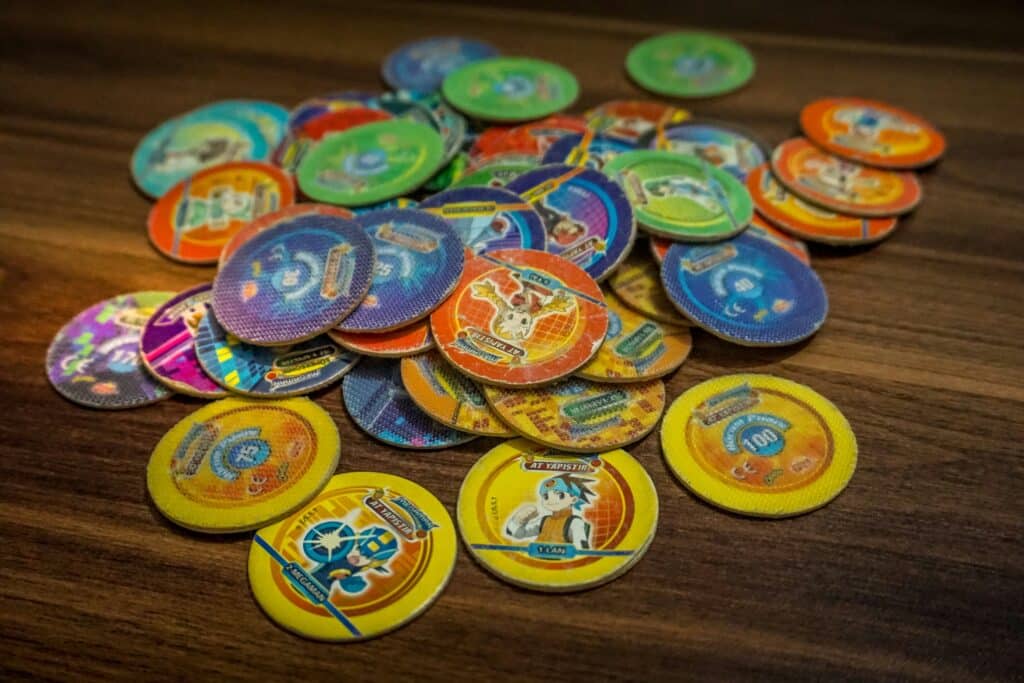A workplace where the pursuit of excellence becomes an engaging, thrilling game. Sounds like an unattainable utopia? Not anymore! Welcome to the world of leaderboards and badges – tools that can transform the dynamics of your assessments and performance management. 👏🚀

Leaderboards and badges, elements of gamification, have seen a significant surge in popularity across a variety of sectors. Gamification – the application of game-design elements and principles in non-game contexts – is a powerful tool that can turn routine tasks into intriguing challenges, providing tangible rewards for achievements. 🎮🏆
This blog post is designed to serve as a comprehensive guide to leaderboards and badges, and how you can leverage these gamification techniques to enhance your assessments. Whether you’re an HR professional trying to revamp your performance management system or a project manager looking to foster a competitive spirit within your team, this guide has got you covered. 📘💼
We’ll begin by introducing you to the concept of gamification, exploring its roots and its rapid rise to prominence in the corporate world. We’ll delve into the psychological aspects, understanding why gamification works and how it taps into our innate human tendencies. 💡🧠
Understanding Leaderboards 🏅
Next, we’ll turn our focus to one of the key elements of gamification – leaderboards. We’ll break down what leaderboards are, how they function, and how they can be effectively integrated into your assessment systems. You’ll learn about the different types of leaderboards and the various factors to consider when designing one. 📊
Badges and Their Power 🎖
After exploring leaderboards, we’ll move on to another potent gamification tool – badges. Badges serve as a visual representation of achievements, and in this section, we’ll discuss their power and potential in driving employee engagement and motivation. You’ll gain insights into the art of designing and awarding badges, ensuring they truly resonate with your team. 🌟
Best Practices for Implementing Gamification 🛠
Finally, armed with the knowledge of leaderboards and badges, we’ll guide you through the best practices for implementing gamification in your assessments. We’ll present real-world examples and case studies, showcasing the transformative power of these techniques when applied correctly. You’ll walk away with a practical toolkit to create an assessment system that not just measures performance but also encourages constant improvement. 📈
While gamification can sound like all fun and games, it’s a strategy that requires careful planning, thoughtful design, and constant evaluation. But worry not! By the end of this guide, you’ll be well-prepared to take on the challenge and dominate the game. Ready to level up your assessments? Let’s dive in! 🏊♂️
Unleashing the Power of Gamification in Assessments: The Role of Leaderboards and Badges
In the fast-paced, competitive world of today, gamification has emerged as a powerful tool to drive engagement, boost performance, and foster a culture of continuous learning and improvement. In the realm of assessments, gamification elements such as leaderboards and badges are not merely fancy add-ons but strategic instruments that can significantly enhance the effectiveness of assessments. Let’s delve deeper into this exciting world of gamification and understand how you can level up your assessments with leaderboards and badges. 🏆
For the uninitiated, gamification involves applying game mechanics and game design techniques in non-gaming contexts to make activities more engaging and fun. In assessments, gamification can be implemented in various ways, including through leaderboards, badges, points, levels, and challenges. If you want to understand more about gamification in a nutshell, check out the video “What is Gamification?” by TEDx Talks on YouTube. 🎥
Now, let’s focus on the two powerful gamification elements: leaderboards and badges. Leaderboards rank participants based on their performance or achievements, fostering a healthy sense of competition. Badges, on the other hand, are symbols or indicators of accomplishments, serving as visible tokens of achievement and progression. But how can these be effectively integrated into assessments? Let’s find out! 👀
The Dynamic Duo: Leaderboards and Badges in Assessments
Leaderboards and badges, when used effectively, can transform your assessments into dynamic, interactive, and engaging experiences. They tap into the innate human tendencies of competition and achievement, making assessments not just a process of evaluation, but also a journey of accomplishment and recognition.
Leaderboards make the performance visible and comparable, sparking a sense of competition among the participants. They can see where they stand compared to others, which can motivate them to improve. Badges, on the other hand, provide tangible recognition for specific achievements. They can be tied to various performance indicators, such as the completion of a task, mastery of a skill, or achievement of a milestone. The journey towards earning these badges can make the assessment process more goal-oriented and motivating.
Moreover, these gamification elements can also encourage participation and continuous learning. By incorporating leaderboards and badges in your assessments, you can make the learning process more engaging and enjoyable, thereby enhancing the overall effectiveness of the assessments. To see gamification in action, watch the video “Gamification in Education” by Extra Credits on YouTube. It provides a comprehensive overview of the benefits and challenges of gamification in education and assessments. 🎞️
Maximizing the Impact: Best Practices for Using Leaderboards and Badges
While the potential benefits of using leaderboards and badges in assessments are clear, how can you maximize their impact? Here are some best practices:
- 🏅 Use leaderboards and badges to recognize a wide range of achievements, not just high scores. This can foster a more inclusive environment where different skills and competencies are valued.
- 📈 Regularly update the leaderboards and provide real-time feedback to keep the participants engaged and informed about their performance.
- 🎯 Make the criteria for earning badges clear and transparent. This will ensure that participants understand what they need to do to earn them.
- 🎁 Offer tangible rewards along with badges. This can serve as an additional incentive for participants to perform better.
Moreover, it’s important to ensure that the use of leaderboards and badges aligns with the overall objectives of the assessments. They should not distract from the main goal of the assessment but rather facilitate it. Thus, careful planning and thoughtful implementation are key to the successful use of these gamification elements.
For a deeper understanding of these best practices, check out the video “Best Practices in Gamification” by Gabe Zichermann on YouTube. It provides valuable insights into how to effectively use gamification elements like leaderboards and badges in various contexts. 📺
Comparing the Impact: Leaderboards vs Badges
| Aspect | Leaderboards | Badges |
|---|---|---|
| Engagement | High | High |
| Competitiveness | High | Moderate |
| Recognition of Achievement | Moderate | High |
| Encouragement of Continuous Learning | Moderate | High |
The above table provides a comparative view of the impact of leaderboards and badges on various aspects of assessments. It’s clear that both these gamification elements have their strengths and can complement each other to create a more engaging and effective assessment experience. Hence, consider using both in your assessments to reap the maximum benefits.
Remember, the goal is not just to ‘gamify’ the assessments, but to create a more engaging, motivating, and meaningful assessment experience. By integrating leaderboards and badges in your assessments, you can take a significant step towards this goal. So, are you ready to level up your assessments and dominate the game with leaderboards and badges? The game is on! 🎮🚀
Conclusion
In wrapping up, we’ve delved deep into a broad yet compelling subject matter, where we’ve extensively covered the intricate details of software engineering. It’s important to highlight that this isn’t just a fleeting trend, but a fundamental part of our everyday lives, powering everything from mobile apps to enterprise systems.
We began with a detailed exploration of what software engineering truly entails, shedding light on its varied facets. The primary focus has been its necessity and relevance in today’s rapidly evolving digital landscape. We discussed its cardinal role in solving complex problems, building efficient systems, and, most importantly, enhancing user experience. We also dissected its multi-layered structure, encompassing system software, programming software, and application software. It’s apparent that understanding these different types of software gives us a more comprehensive perspective on how diverse software engineering is.
Further, we explored different software development methodologies, each with its own strengths and weaknesses. From the traditional Waterfall model to Agile, Scrum, and DevOps, these methodologies underscore the dynamic nature of software engineering. They serve as guiding frameworks, helping teams navigate the development process more efficiently and effectively. 📈
A major highlight was the role of software engineers. We saw that they don’t just write code, but they are instrumental in every phase of the software development life cycle. They design, implement, test, and maintain software systems, ensuring they meet the required quality standards. This makes them indispensable assets to any organization.
Additionally, we dived into some of the most popular programming languages today, including Java, Python, C++, among others. These languages, each with its unique capabilities, are the building blocks for creating various software applications.
As we’ve seen, the world of software engineering is vast and multidimensional. It requires a blend of technical acumen, problem-solving skills, and creativity. It’s a field that continues to evolve, demanding continuous learning and adaptability.
But it’s not all technical. We’ve emphasized the importance of soft skills like communication, teamwork, and time management in software engineering. These skills are just as crucial as technical knowledge for a successful career in this field. 😉
In conclusion, software engineering is more than just a profession – it’s an art and science that has a significant impact on our world. It’s a dynamic and challenging field, but the rewards can be immense. So, if you’re considering a career in software engineering or just want to learn more, I encourage you to continue your research.
Don’t hesitate to share this article with your colleagues or anyone who might find it useful. Your feedback and comments are always welcome, as they foster a productive conversation. 💡
Thank you for joining me on this exciting journey through the realm of software engineering. Let’s continue to explore and learn together!
Reference Links:
1. ScienceDirect – Comprehensive resource for scientific, technical, and medical research.
2. IEEE Computer Society Digital Library – An extensive digital library for computing professionals.
3. Journal of Systems and Software – A resource for research and information on software engineering.
Please note: Always ensure to access information from active and reliable sources for your research.
Remember: Keep learning, keep growing, and keep coding! 👨💻👩💻
#softwareengineering #programming #coding



